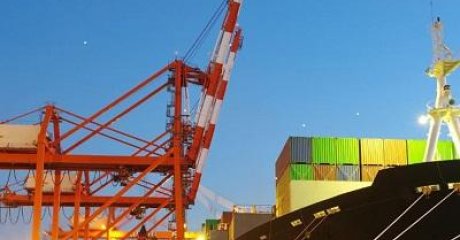Taking stock: BEPS Action Plan as it relates to the ‘control over risk’ concept

As a transfer pricing specialist at Meijburg & Co, one of the teams I am a member of is the Shipping & Offshore team. This team advises and assists internationally operating maritime / offshore companies (for example, oil and gas or offshore construction in the broadest sense) with transfer pricing issues. In addition to the ‘usual’ transfer pricing assistance with regard to compliance (Master & Local files, benchmarks for bareboat charters or offshore construction activities for example) we actively participate in the implementation of projects or the international structuring of companies in this sector. We as transfer pricing specialists operate integrated with corporate tax and the rest of the team; an approach that pleases both me and our clients.
Taking stock
In my view, the change that has had the biggest impact on this industry is the BEPS Action Plan as it relates to the ‘control over risk’ concept. It has been five years since the OECD published the Aligning Transfer Pricing Outcomes with Value Creation report as part of the BEPS Action Plan. This report introduced a six-step plan to analyze the allocation, the assumption and the pricing of risks as part of the functional analysis. In addition, the OECD introduced the ‘control over risk’ concept, whereby – in short – risks cannot be attributed to a party if that party does not have the functionality to exercise control over these risks.
This report has now been included in Chapter I of the OECD Transfer Pricing Guidelines, the first transfer pricing reports have been prepared, corporate income tax returns have been filed and discussions, including about the shipping and offshore industry, have been held with the tax authorities. Time to take stock.
Introduction of the control over risk concept
One of the key points of the changes described in the report concerned a new six-step plan, with as starting point that risks may only be allocated to a group entity if this entity also has the required functionality to exercise control over these risks. Control over risks in a transaction focuses on the decisions made by parties about taking certain risks and passing them on or eliminating them. For example, decisions on accepting risks, the option whether or not to insure or taking measures to mitigate risks.
This change has had major implications for the maritime and offshore industry. It is common practice in this sector to transfer crucial assets, such as vessels, platforms, FPSOs and FLNGs, to separate group entities, i.e. asset companies. These asset companies then lease the assets to operating entities within the group. The new guidelines have created much debate. This is because although in many cases asset companies are competent with regard to the day-to-day leasing of the assets, they may lack competence in special circumstances, such as the long-term underutilization of the asset, the option to upgrade or modify, and the purchase or sale of the asset. The question is then whether the associated risks can be allocated to the asset companies. This is not always the case in practice. Being a tax-resident of a jurisdiction is often not enough.
Designating the ‘control over risk’ function
The maritime and offshore industry is typically capital intensive, so that the main business risks are often associated with the assets. Examples are the manning level risks of ships and equipment, the deployment of the vessel fleet and the equipment (which ship for which project and in which region) and operating risks such as scheduling major maintenance, upgrades of specifications and certification, and the extension of the useful life of the assets. Because such assets often play a crucial role within a multinational in the maritime and offshore industry, it is often not easy to designate the control over risk function.
The company organization is often crucial here. In some cases the head office plays a decisive or important role, while in other cases global or regional teams provide a mixed picture. For example, a vessel operating in a region, whereby multiple business units use the same vessel to implement projects. If, in such cases, the deployment and manning levels of the vessel are monitored by a management team made up of different regional and divisional managers in multiple countries, manning levels and deployment risks cannot, for example, simply be attributed to one group entity. After all, there is no single group entity with control over the manning levels risk, leaving aside the complexity of this issue if there is also a head office - permanent establishment and the associated profit attribution (for example in relation to the operation of FPSOs or FLNGs etc., which usually remain at the offshore location during their entire useful life). Numerous aspects play a major role in such situations.
Although the introduction of the step-by-step plan for risk allocation has provided a clear system, going through the steps within the maritime and offshore industry and arriving at the correct risk allocation has not proven to be easy.
The ‘cash box’ and the risk-free return
If a group entity cannot exercise control over risks, then this entity is entitled to no more than a risk‑free return. If an asset company can only exercise control over a particular risk, this asset company should receive a risk-adjusted return. This is a clear break with the past, where an asset company usually received a fee for its financing function. It goes without saying that a risk-free return is usually (much) lower than a financing fee.
For an asset company that leases vessels to group companies without sufficient functionality to exercise control over risks, this not only means a lower remuneration than before, but also that the lease prices and profit appropriation within the group must be adjusted.
The introduction of the risk-free return subsequently also partly coincided with the aftermath of the credit crisis and the policy of the European Central Bank. The bond-buying program resulted in extremely low or even negative interest rates, which also brought risk-free returns perilously close to zero. Although the additional guidance from the OECD in the 2019 report on Financial Transactions did provide more clarity on how the risk-free return should be determined, it did not explain how to deal with the current market data of low interest rates and risk-free returns.
Conclusion
The new guidelines have created controversy and much debate. Now more than ever it is important to properly identify the risks within an internationally operating company in this industry, as well as the associated functions. Regularly going through the six-step plan can provide new insights. We challenge you to do this test with us as it always leads to improvement!

